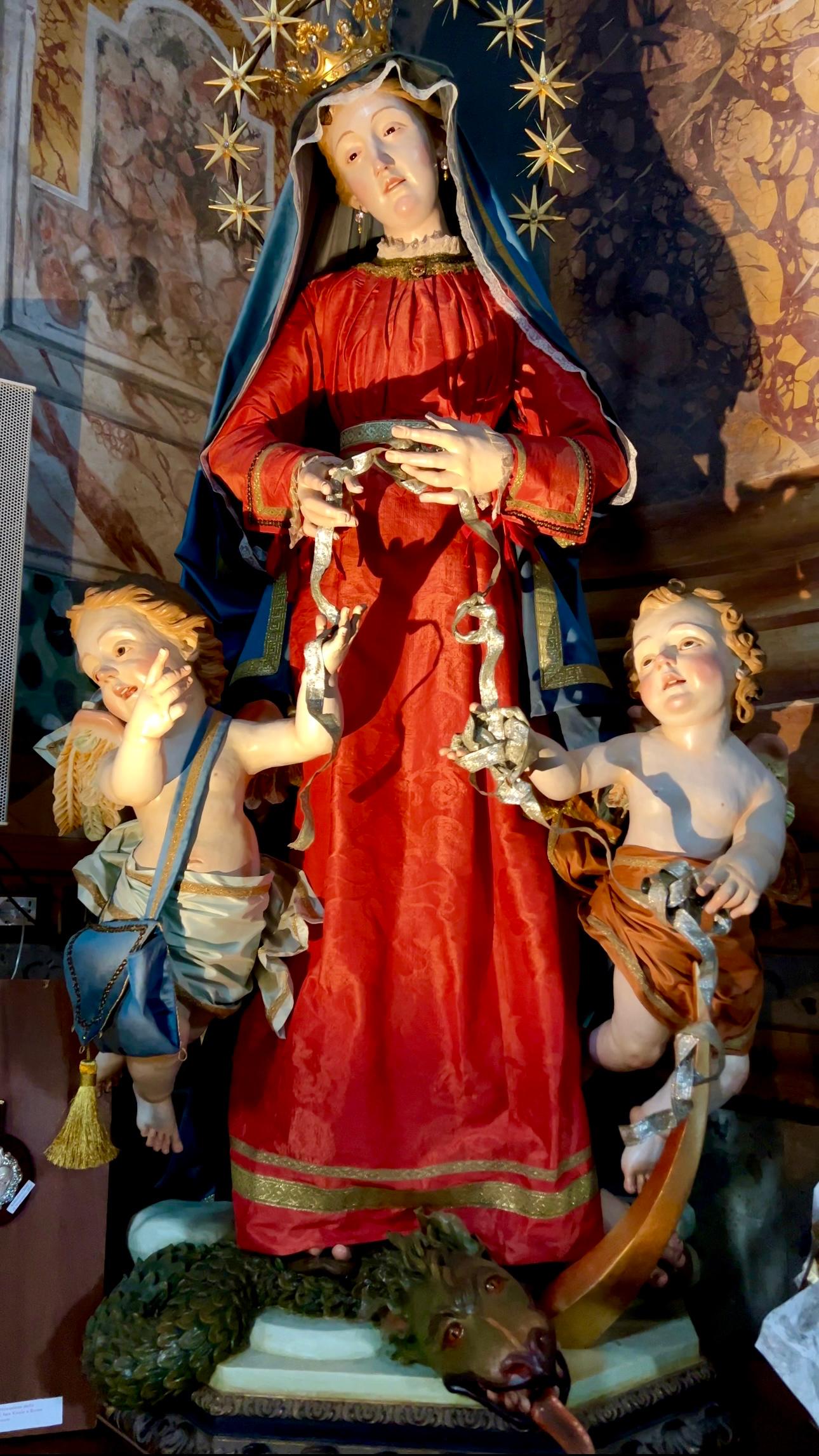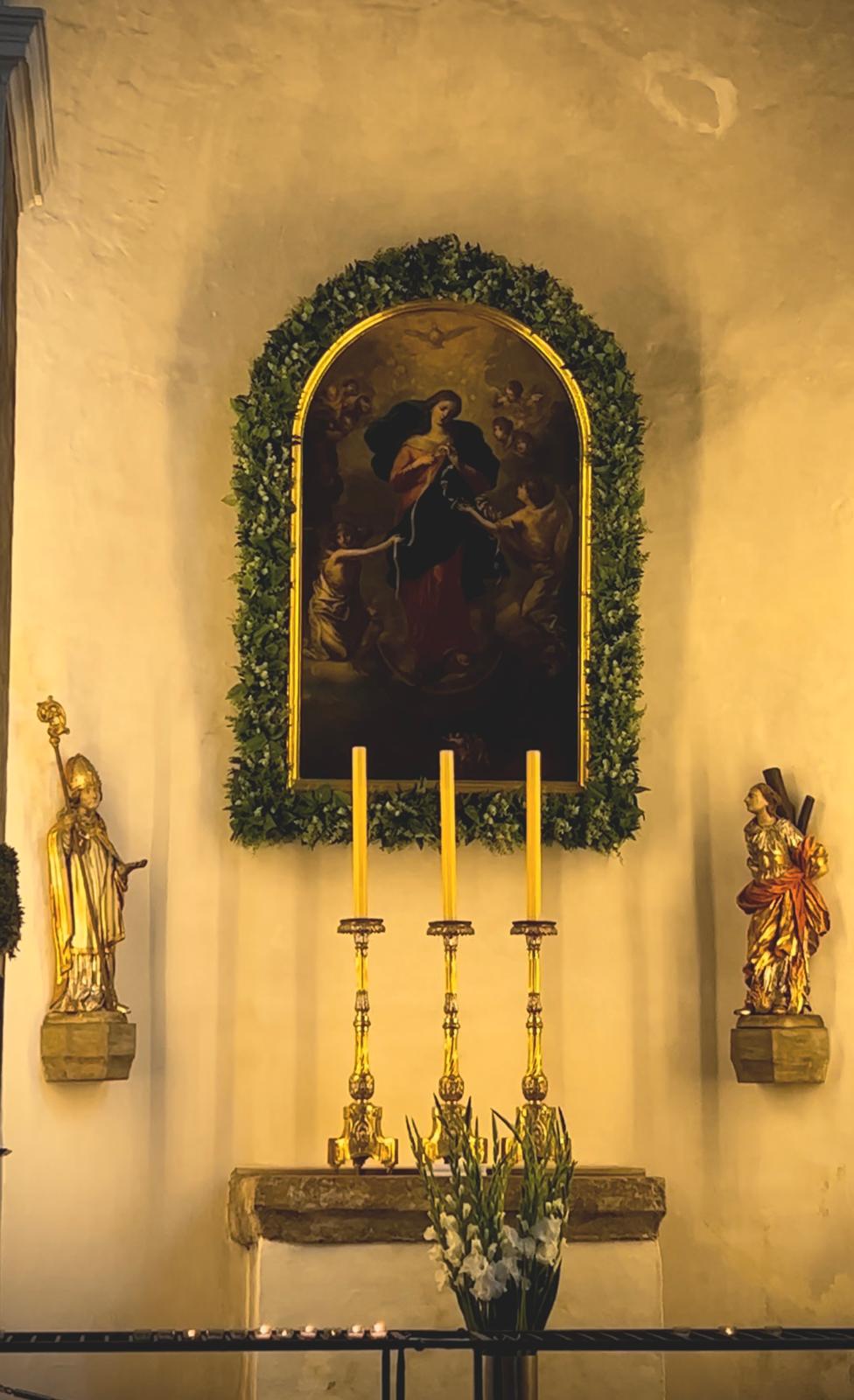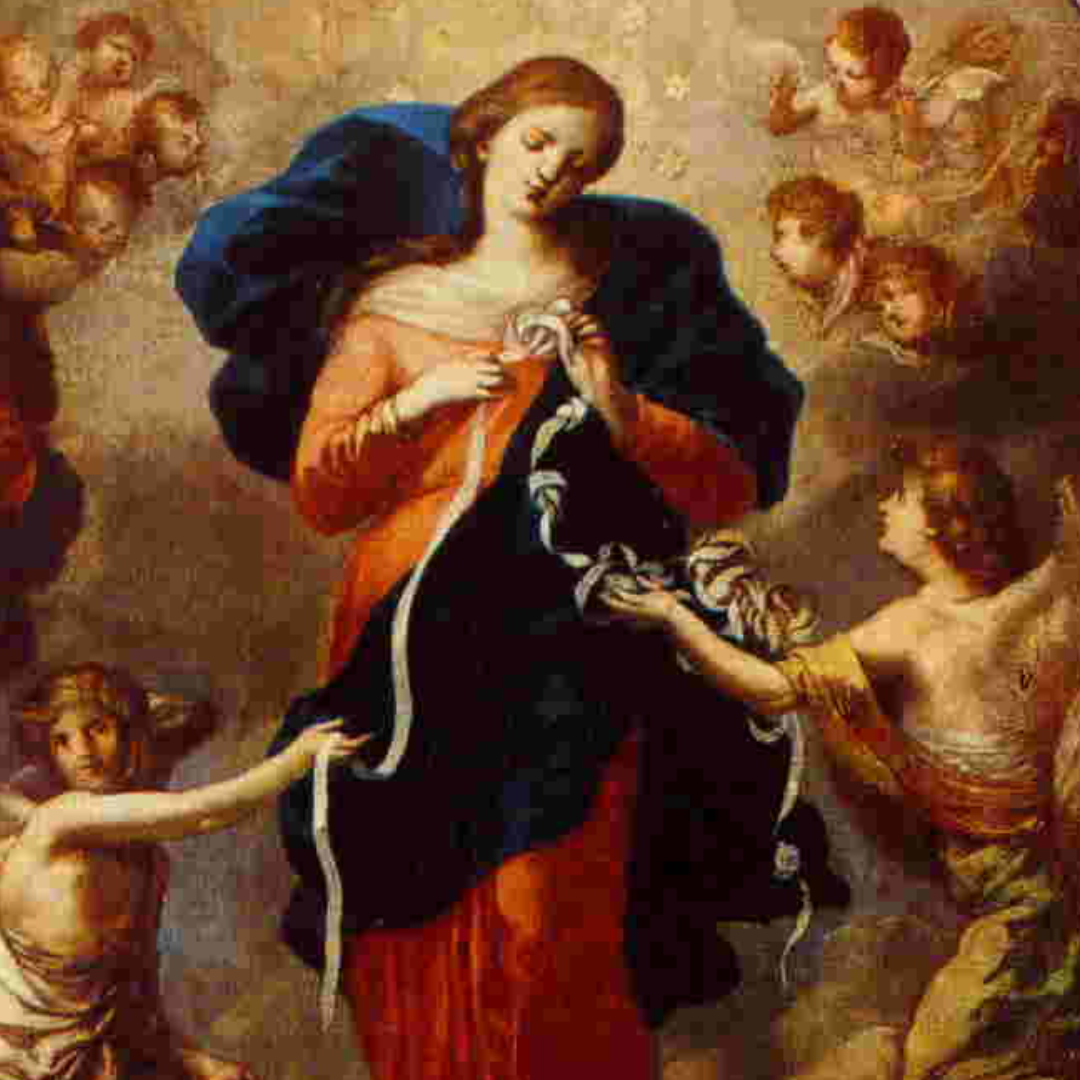At the start of his pontificate, Pope Francis introduced a devotion to Our Lady that he discovered while studying in Germany as a young Jesuit: Our Lady, Undoer of Knots.
As archbishop, he introduced the devotion in Argentina, and now as Pope, throughout the Universal Church. Mary’s feast under the title of “Our Lady, Undoer of Knots” is celebrated on September 28.
The image of Our Lady Undoer of Knots presents Mary as a compassionate and gentle mother who untangles the difficulties, sins, and obstacles we face, leading us to a deeper connection with God and greater freedom in our spiritual journey.

How did Pope Francis discover the devotion to Mary, Undoer of Knots?
The Pope has never visited Augsburg. While studying in Germany in the 1980s, however, a nun sent then-Father Jorge Mario Bergoglio a Christmas card with this image of Our Lady.
The Holy Father doesn’t consider the original Baroque painting a significant work of art, but the message of Our Lady untying knots piqued his curiosity.
The Origin of the Image
In the image, Mary holds a white ribbon with knots tied into it. Assisted by angels, Mary unties the knots.
The origins of the devotion to Our Lady, Undoer of Knots, dates back to Augsburg, Germany, in 1612. At that time, a married couple, Wolfgang Langenmantel and Sophia Rentz, were on the brink of divorce. Desperate to save his marriage, the husband sought the counsel of Jesuit priest Father Jakob Rem.
Inspired by Saint Irenaeus, a second-century Church Father, Father Rem took the ribbon used in the couple’s wedding ceremony, and the two prayed to the Virgin Mary.
The inspiration came from Saint Irenaeus’s writings against heresies, where he spoke of Mary, saying,
“The knot of Eve’s disobedience was untied by Mary’s obedience: what the virgin Eve bound through her disbelief, Mary loosened by her faith” (“Against Heresies,” 3, 22, 4; see Catechism of the Catholic Church, No. 494).
Inspired in this way, the priest and husband asked Mary to untie the knots of the couple’s marital struggles and to smooth the symbolic ribbon that had bound them in matrimony. Their prayers were answered, and the couple reconciled, living out their married life in harmony.
Many years later, their grandson, Father Hieronymus Langenmantel of St. Peter’s Monastery in Augsburg, commissioned artist Johann Melchior Georg Schmidttner to create a painting titled "Untier of Knots" around the year 1700.
This painting, a testament to the power of Mary’s intercession, remains to this day in the Church of St. Peter am Perlach in the city center of Augsburg, Germany.
The Meaning of the Knots
The "knots" represent the various struggles and burdens of human life, from personal sins and guilt to relational conflicts and emotional wounds.
Knots can also symbolize fears, insecurities, doubts, or problems that seem overwhelming and unsolvable. Just as a knot can make something rigid and constricted, these spiritual and emotional knots make life burdensome, leading us to feel trapped or bound by our circumstances.
The devotion highlights the Catholic belief in the powerful intercession of Mary, who, through her maternal care, intercedes with her Son, Jesus Christ, to free the faithful from these entanglements.
By entrusting our difficulties to her, she gently and lovingly works to unravel the knots in our lives, no matter how hopeless or complex they may seem.
As a loving mother, Mary is actively involved in the lives of her children, untying knots in an intimate, careful, and compassionate manner.

The Theological Significance
The devotion to Our Lady Undoer of Knots is deeply theological, rooted in Mary's role in salvation. Early Church Fathers often compared Mary to Eve: while Eve’s disobedience brought the knot of sin, Mary’s obedience untied it, leading to salvation. Mary’s submission to God’s will, culminating in Jesus’ Incarnation, is central to humanity's redemption.
Our Lady Undoer of Knots offers a comforting image of Mary as a loving Mother, ready to help with personal struggles, relational issues, or spiritual trials. Catholics are encouraged to trust in her intercession and in God’s providence, knowing that through her, even the most complex problems can be resolved in a world filled with uncertainty.
Through Mary’s hands, the knots that bind us can be undone, and we can move forward in hope and trust.


